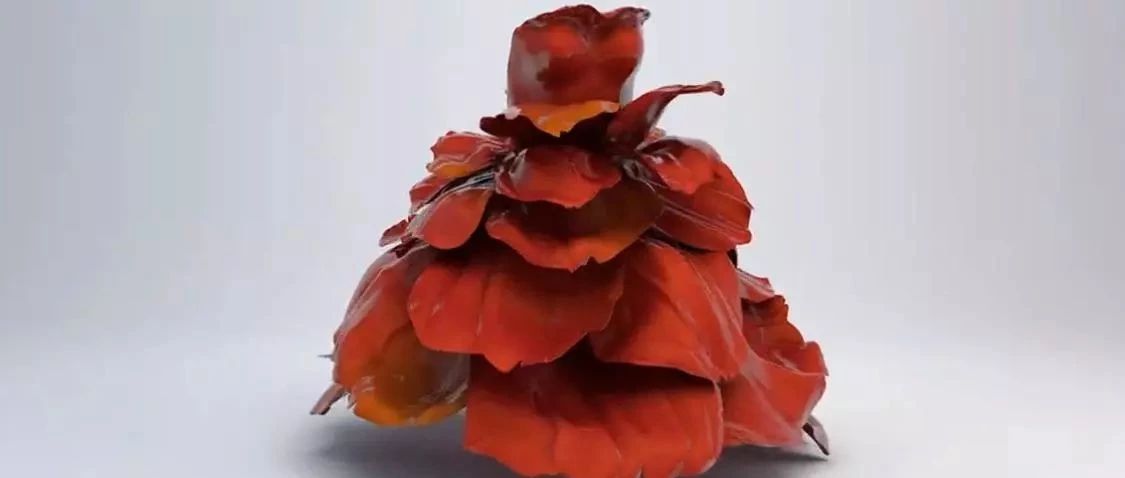
Hard, heavy, and slow.
I don't know if you have followed Met Gala recently, but all fashion numbers may have commented on a round of demon styling. Today I just want to talk about the 3D printed dress worn by supermodel Jourdan Dunn (after all, nothing else has anything to do with technology).
this is a petal-shaped skirt that weighs 30 pounds (less than 14kg) and took more than 1100 hours to make, according to the MIT Technology Review.
the following is a disassembly picture of the skirt, which looks pretty cool:
(photo source: ZAC POSEN/PROTOLABS/GE ADDITIVE)
first explain stereoscopic light curing molding (SLA):
the 3D printing that we usually see is usually positive, squeezing melted plastic like cream, and then stacking them layer by layer, and the plastic will solidify when it is cool. The curing of SLA depends on the chemical reaction: under the action of light, the photosensitive resin which was originally in the fluid state produces cross-linking and becomes solid locally. SLA printing is carried out backwards, solidify one layer and pull up a little bit, and finally complete the printing.
A schematic diagram (which is, of course, quite simplified. )
this dress is the work of designer Zac Posen. Customizing this 3D printed skirt requires scanning the wearer first to make sure the dress fits. This 3D printed skirt naturally has a lot of grooves in the eyes of onlookers, for example, it is hard, it is probably more like armor than clothes, and it is really heavy. But these are actually all right, after all, it is more of a concept presentation than a substitute for clothes in life.
but I think the only thing that takes more than 1100 hours is a real snag. It reflects the current problem of 3D printing: printing is too slow, especially when printing large items.
in fact, there are technologies to speed up 3D printing. For example, I have seen a fast version of light-curing technology, and the related paper was on the cover of Science in 2015. Using this method, a small model of the Eiffel Tower can be obtained in seven minutes, and it is smoother than ever.
the technicians added a "reaction inhibition zone" near the transparent plate. By adding oxygen to inhibit the reaction, the curing reaction in the "inhibition zone" near the transparent glass can not occur, but the curing can only occur when it leaves the inhibition zone. The advantage of this is that even if it is cured quickly, there is no need to worry about the cured part adhering to the transparent plate. The specific explanation is more complicated, and you can read the original text in detail.
I just suddenly thought of the latter thing. I don't know if it has been used on a large scale.
3D printed skirt source: https://www.technologyreview.com/s/613500/these-amazing-met-gala-looks-took-more-than-a-thousands-hours-of-3d-printing/
curvaceous turquoise prom dresses make a great look for nearly any locale . User-friendly, fun and a great value.
3D printed skirt source: https://www.technologyreview.com/s/613500/these-amazing-met-gala-looks-took-more-than-a-thousands-hours-of-3d-printing/